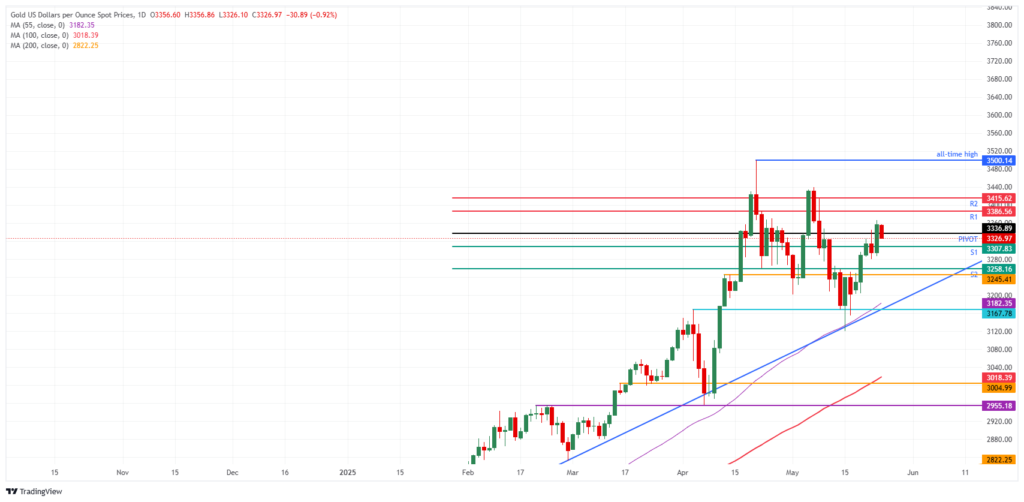
Monday saw a minor decline in the gold price, wiping out some of Friday’s gains. The decline was caused by a shift in market sentiment toward risk-taking. This followed Trump’s temporary delay of the EU’s trade tariff implementation.
However, as rising US fiscal concerns continue to support the appeal of gold, this fleeting optimism may not last. Therefore, as the US dollar continues to fall, traders balance short-term relief against long-term risks in their market outlook.
Trump’s Tariff Pause Offers Only Temporary Relief
On Sunday, President Donald Trump declared that he would wait until July 9 to impose 50% trade tariffs on the EU. This decision was made after consultation with European Commission President Ursula von der Leyen. However, many analysts continue to question whether significant progress can be made in such a short time.
Markets initially responded favorably, seeing the delay as a possible opportunity for talks. According to Josh Gilbert, an eToro analyst, these pauses do not fundamentally alter Trump’s protectionist stance. He also warned that if strong trade agreements are not reached soon, markets will return to geopolitical and fiscal concerns.
Can Gold Hold as Dollar Slips Again?
The growing tariff threats and market uncertainty were the main drivers of last Friday’s gains. The trade tariff delay has temporarily eased investor concerns. However, gold is having difficulty maintaining its position, and this calm seems to be fading. Adding to the complexity is the US dollar’s ongoing decline, which continued Monday.
CFTC data indicates that bearish dollar positioning is still strong. Moreover, Trump’s new tax bill, which just passed the House, has raised fiscal concerns. These concerns have further hampered the dollar’s market outlook.
Pham Minh Chinh has advocated for the creation of a regulated gold exchange in Asia to reduce smuggling and manipulation. This introduces a new level of potential volatility to the price. Moreover, this development underscores how sentiment surrounding precious metals trading is influenced by geopolitical events.
Gold Price Faces Resistance with Cautious Optimism
Following a brief respite from trade tension, the gold (XAU) price fell to $3,332 on Monday, reversing recent highs. The price is facing key resistance at $3,386 and $3,415. If bullish momentum returns, there’s a chance that the $3,440 range will be tested once more. The price could rise to $3,500 if it breaks above this level. In particular, it will if the market turns risk-averse again.

On the downside, several levels of support might keep prices steady. These consist of $3,257 and $3,307, with a key area close to $3,240. Therefore, as long as macroeconomic issues exist, the gold market outlook is cautiously optimistic.
Although Trump’s action may have offered some temporary relief, its impact is constrained by the short time frame. More general political unpredictability suggests that gold demand is still strong. Gilbert noted that without long-term solutions, trade tariff pauses only serve as a short-term distraction from more pressing issues.
Gold Price Stability Depends on Risks
Due to persistent US fiscal concerns and waning US dollar strength, the gold price has declined. As a result, market participants are closely monitoring future tariff negotiations and the Senate’s reaction to the tax bill. Even as the relief rally fades, the longer-term market outlook for gold remains steady for the time being. After all, gold’s function as a hedge against uncertainty will continue to influence its movements in the months ahead.







